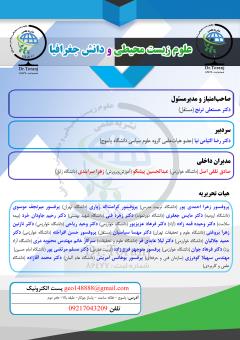بررسی روند طرحریزی شهری درکشورهای توسعهیافته با تأکید بر بازآفرینی شهری در سه¬دهة اخیر«موردمطالعه ایران»
محورهای موضوعی : علوم جغرافیا (کلیه گرایشها)
محمد رامیان
1
,
فاطمه ادیبی سعدی نژاد
2
![]()
1 - دانشگاه آزاد اسلامی واحد اسلامشهر
2 - دانشگاه ازاد اسلامی واحد اسلامشهر
کلید واژه: برنامهریزی, توسعه شهری, طرحهای شهری, بازآفرینی شهری,
چکیده مقاله :
شهر بهعنوان واقعیتی جغرافیایی، اقتصادی، سیاسی و جامعهشناختی در هر دوره ای از رشد و تحول خود از هرکدام از این عوامل تأثیر پذیرفته و بر هرکدام از آنها تأثیر گذاشته است. پیچیدگی هر یک از این عوامل خود موجب پیچیدگی شهر بهعنوان تبلور فضائی آنها بوده است. مطمئناً سازمان دادن و نظم بخشیدن به شهر و چگونگی رشد و تحول آن نیازمند موضوع شناسی شهر و مسائل شهری و سپس برنامه ریزی برای آن میباشد. در دهه های اخیر، سیاست های متعددی در رویارویی با مسئله افت کیفیت محیطی، منزلت اجتماعی و سرزندگی اقتصادی شهرها (بهویژه در نواحی درونی آنها) مطرح و برنامه های گوناگونی در این خصوص به اجرا درآمده اند. طی سه دهه اخیر در کشورهای توسعهیافته بهمنظور حل معضلات و تنگناها در محدوده های شهری رو به افول، رویکردهای مختلفی در تئوری و عمل تجربهشدهاند. سياست گذاري هاي توسعه در ايران طيّ دهههای اخير، به رشد ناموزون و عدم تعادل هاي شديدي در توسعه، چه به لحاظ بخشي(ميان بخش هاي کشاورزي، صنعت و خدمات يا بخش هاي سنّتي و مدرن) و چه به لحاظ فضايي- مکاني ميان شهرها و روستاها و حتّي در سطوح مختلف جوامع شهري منجر شده است. نهادهای زی ربط، برای توسعة متوازن شهری و به حداقل رساندن مشکلات، به ایجاد «طرحهای شهری» روی آورده اند که بهخودیخود، بنیادی ترین ابزار شکل دهی و نظم دهی به شمار می روند. بیش از سه دهه از زمان تهیه و اجرای طرحهای شهری به هدف ساماندهی فضای شهری می گذرد بهرغم همه تمهیدات صورت گرفته، ارزشیابی ها نشان می دهد که این طرح ها در دستیابی به اهداف خود ناموفق بوده اند. هدف اصلی، بررسی دیدگاه های اندیشمندان و برنامه ریزان در راستای عوامل مؤثر بر طرحهای شهری است.
As a geographical, economic, political and sociological reality, the city has been influenced by each of these factors in each period of its growth and development and has influenced each of them. The complexity of each of these factors has caused the complexity of the city as their spatial crystallization. Certainly, organizing and ordering the city and how it grows and evolves requires the thematics of the city and urban issues and then planning for it. In recent decades, several policies have been proposed to deal with the issue of environmental quality, social dignity and economic vitality of cities (especially in their inner areas) and various programs have been implemented in this regard. During the last three decades in developed countries, in order to solve the problems and bottlenecks in declining urban areas, various approaches have been experienced in theory and practice. The development policies in Iran during the last decades have led to uneven growth and severe imbalances in development, both in terms of sectors (between agriculture, industry and services or traditional and modern sectors) and in terms of Spatial-spatial differences between cities and villages and even at different levels of urban communities have resulted. For balanced urban development and minimization of problems, related institutions have turned to creating "urban plans" which are considered the most fundamental means of shaping and organizing. More than three decades have passed since the preparation and implementation of urban plans for the purpose of organizing the urban space, despite all the measures taken, evaluations show that these plans have failed to achieve their goals. The main goal is to examine the views of thinkers and planners in line with the factors affecting urban plans.
